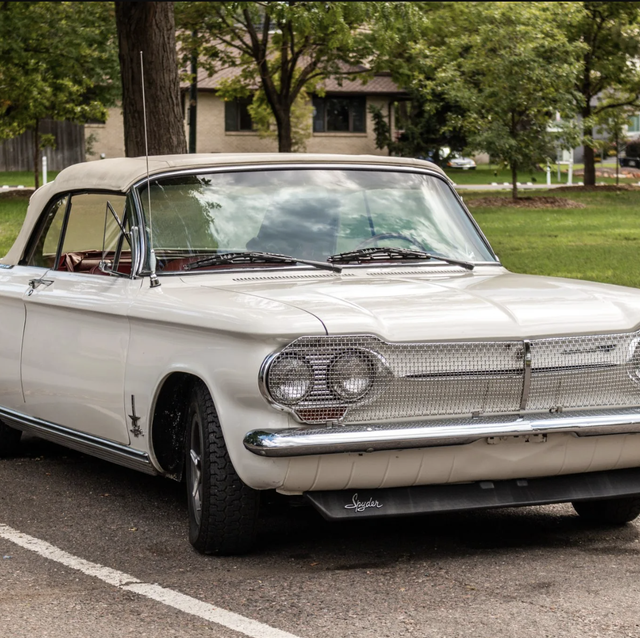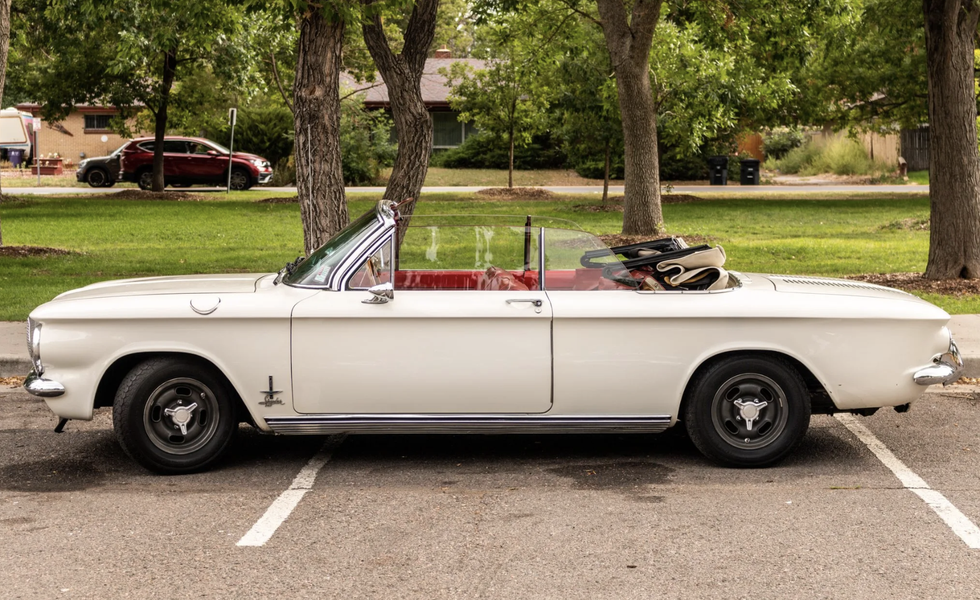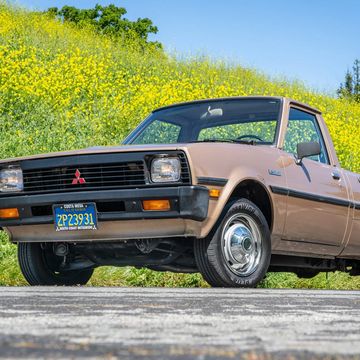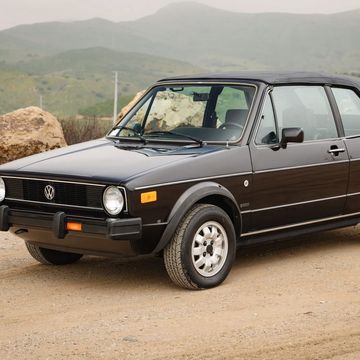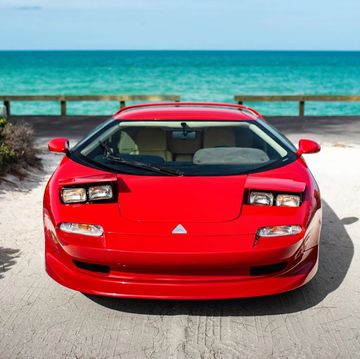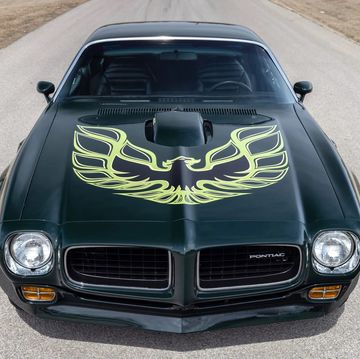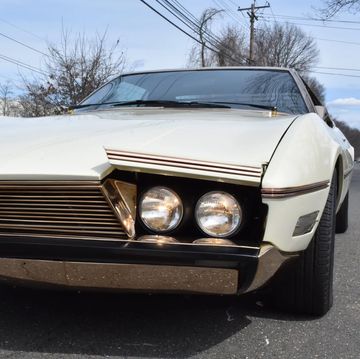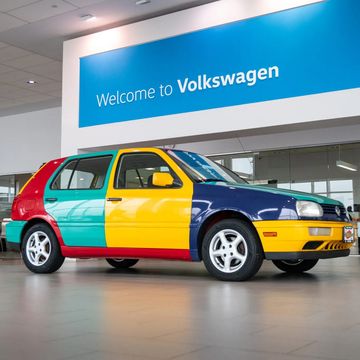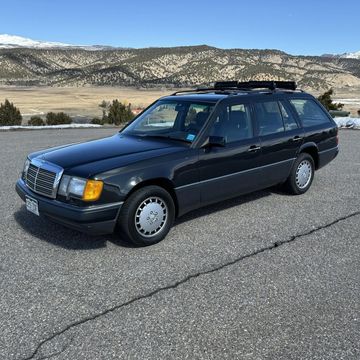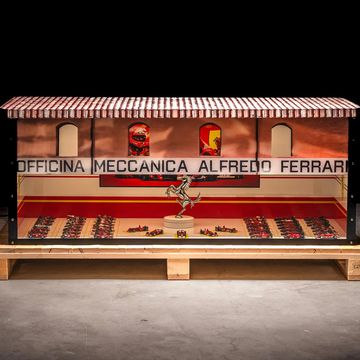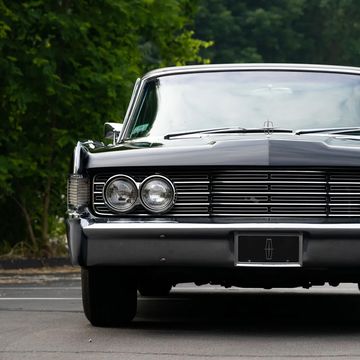• The Chevrolet Corvair is known mainly for getting the attention of safety advocate Ralph Nader, but it also represents GM's nascent attempt to fight the rising tide of small imported cars to the U.S.
• This rear-engined Corvair Monza Spyder has a 2.4-liter turbo flat-six engine and a four-speed manual transmission, not to mention red vinyl upholstery.
• The online auction goes until Monday, October 3.
I'm not a Boomer, and I've never fallen for air-cooled cars in the past, so I'm not certain to what I should credit my emergent fascination with Corvairs. But, like many forms of uncanny automotive affection, the first step is in admitting that we are powerless against them. That's why this 1963 Corvair Monza Spyder was my choice for pick of the day on Bring a Trailer—which, like Car and Driver, is part of Hearst Autos.
Perhaps I love Corvairs because they represent, in actuality, a multiversal path General Motors could have (and kind of did) take toward modernization and future-proofing, at a pivot point within the industry. In response to the rising popularity of the first imported vehicle to gain traction in the United States—the VW Beetle—GM put its engineering and design know-how into practice to create this small(ish), rear-engined, air-cooled, independently suspended, distinctly European-styled vehicle.
The Corvair was a hit, eventually spawning an entire family of models including a coupe, sedan, wagon, van, pickup, and—like this one—convertible. This top-performing Monza Spyder sported one of the first industry applications of turbocharging. Forced induction increased the power and torque of the Corvair's flat-six by more than 50 percent, making the car a respectable performer.
This particular model sports some interesting period-correct accessories, like a front stone guard and spoiler and 13-inch Halibrand wheels with three-bar centers. And while I'm not usually one for white exteriors, or red interiors, it all works perfectly on this example.
Ralph Nader's Unsafe at any Speed gets called out for destroying the Corvair program, but this ignores both the context of the industry at the time and the specific institutional behavior of GM. Nader's book certainly used the Corvair as an example, perhaps even as a bit of a straw man, but its impact resulted from the way in which it took on the industry for intentionally privileging profit over any consideration of safety and doggedly fighting necessary regulation.
Moreover, Ford's blistering success with the more traditional (and more profitable) Mustang—derived from an existing car platform, unlike the Corvair's custom one—fostered the GM brass's pre-existing predilection for pushing cheap, unsophisticated pushrod V-8s. As with many products, the company improved the Corvair until it was approaching greatness, then pulled the plug, claiming futility, to focus on simple, stylish muscle cars: Camaros, Chevelles, Novas.
This behavior, and the endemic hubris underpinning it, caused GM to ignore the surging consumer preference for imports from Europe and Japan until it was already too late. The Big Three spent decades trying to catch up on engineering and styling techniques it could have fostered intrinsically if it had stuck to the template offered up here. If that isn't reason enough to buy, I don't know what is.
The Corvair's online auction goes until Monday, October 3, and with four days left between now and then, bidding is only at $3255, so a bargain could be in the making.
Brett Berk (he/him) is a former preschool teacher and early childhood center director who spent a decade as a youth and family researcher and now covers the topics of kids and the auto industry for publications including CNN, the New York Times, Popular Mechanics and more. He has published a parenting book, The Gay Uncle’s Guide to Parenting, and since 2008 has driven and reviewed thousands of cars for Car and Driver and Road & Track, where he is contributing editor. He has also written for Architectural Digest, Billboard, ELLE Decor, Esquire, GQ, Travel + Leisure and Vanity Fair.
